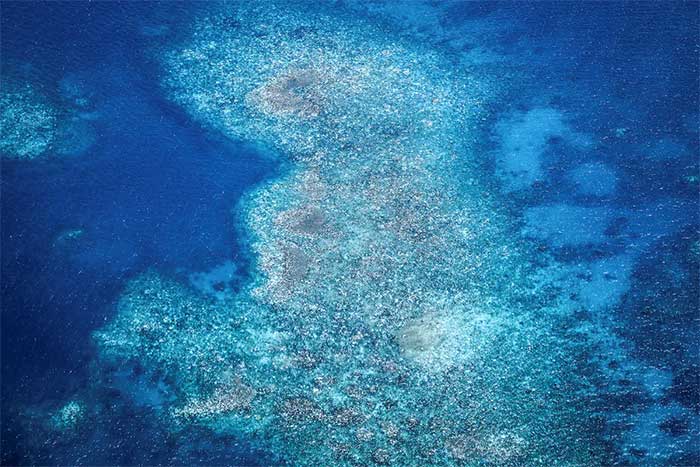Wind is the main cause of coral bleaching on the Great Barrier Reef
Australian researchers have confirmed that wind patterns played a major role in causing severe coral bleaching on Australia's Great Barrier Reef.
In new research, scientists from Monash University in Melbourne have found that wind patterns are a key factor in causing rising ocean temperatures, leading to recent mass coral bleaching events on the world's largest coral reef.

Bleached coral on the Great Barrier Reef around Lizard Island, Australia on April 5, 2024. (Photo: AFP/VNA).
Coral bleaching occurs when ocean temperatures rise too high, causing thermal stress on corals and forcing symbiotic algae out of their tissues, causing the corals to turn white. While bleached corals do not always die immediately, they are at risk of starvation and can take up to 10 years to recover.
The Great Barrier Reef has experienced five mass bleaching events since 2016 , raising concerns about the long-term health of this unique ecosystem. The team analyzed 30 years of weather data and found that the eastern trade winds play a key role in regulating ocean temperatures in the reef.
A decline in trade winds in 2022 significantly changed ocean surface temperatures before the bleaching event, affecting 91% of the reef, said study leader Lara Richards.
'Over three weeks, we saw ocean temperatures increase by almost 2 degrees Celsius, reaching 30.5 degrees Celsius, as the absence of the trade winds reduced clouds, increased solar radiation and eliminated evaporative cooling,' Richards explained . When the trade winds returned, ocean temperatures dropped by a whopping 1 degree Celsius within 48 hours, thanks to a three-fold increase in evaporative cooling.
Previously, the increase in ocean temperatures that causes bleaching has often been linked to the El Niño phase of the El Niño-Southern Oscillation (ENSO), a global climate phenomenon caused by variations in winds and sea surface temperatures in the tropical Pacific Ocean. However, the 2022 bleaching event is the first to occur during the La Niña phase of ENSO, which is typically characterized by lower temperatures and higher rainfall across much of Australia.
- Extensive bleaching occurs on the Great Barrier Reef
- The world's largest coral reef is dying
- The world's largest coral reefs face the risk of permanent wiping
- UNESCO warned of the Great Barrier Reef
- The world's largest coral reef will not fall into danger
- The Great Barrier Reef, the world's largest coral reef, is severely bleached
- Australia implements a system to protect coral reefs
- The world's largest coral reef will be wiped out in 2100
- The world's largest coral reef is seriously degraded
- Australia strives to protect the world's largest coral reef
- The world's largest coral reef in breeding season
- 50% of corals worldwide have disappeared
 Surprised: Fish that live in the dark ocean still see colors
Surprised: Fish that live in the dark ocean still see colors Japan suddenly caught the creature that caused the earthquake in the legend
Japan suddenly caught the creature that caused the earthquake in the legend A series of gray whale carcasses washed ashore on California's coast
A series of gray whale carcasses washed ashore on California's coast Compare the size of shark species in the world
Compare the size of shark species in the world